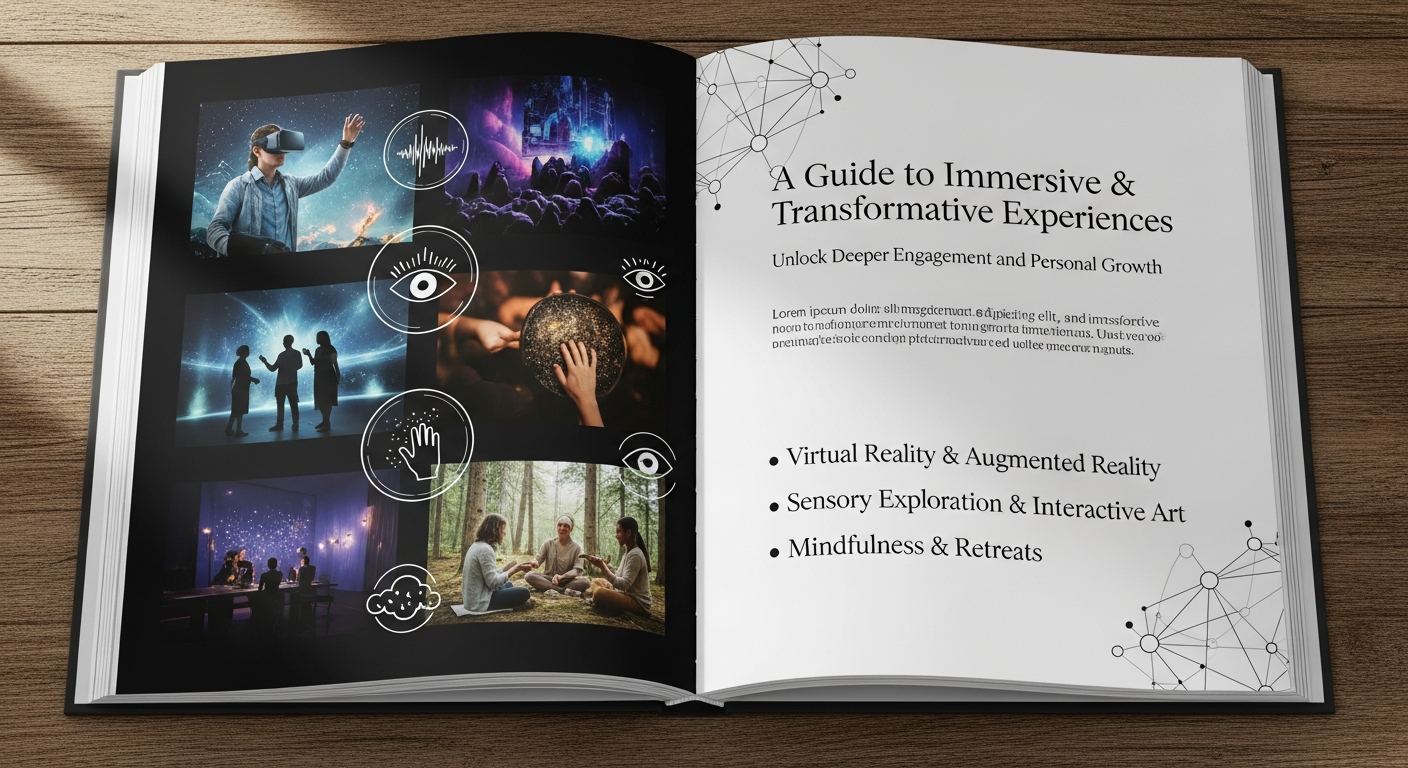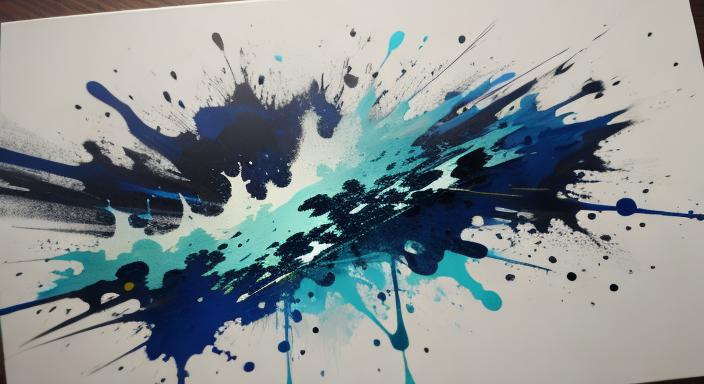What is Installation Art? Stepping into a World of Immersive Experiences
Imagine walking into an art piece instead of just looking at it. That’s the magic of installation art! Unlike a painting on a wall or a statue on a pedestal, installation art takes over an entire space, transforming it into an experience you can walk through, interact with, and feel with all your senses.
This type of art isn’t just about pretty objects; it’s about creating an environment that tells a story, sparks a feeling, or makes you think differently about the world around you. Artists use everything from everyday items to light, sound, and even digital projections to build these unique worlds. While you might be familiar with different types of art styles, installation art offers something completely unique by breaking the frame and surrounding you completely.
In this guide, we’ll dive into what makes installation art so special, explore its exciting history, look at some famous examples, and understand why it continues to captivate audiences worldwide. Get ready to explore an art form that truly lets you step inside the imagination!
Key Points Summary
- Definition: Installation art is a three-dimensional genre that transforms a specific space to change how we perceive it.
- Experience: It is immersive, often inviting viewers to walk through or interact with the work.
- Materials: Artists use diverse materials, from light and sound to natural objects and recycled items.
- History: Roots lie in the early 20th century but it exploded in popularity during the 1960s and 70s.
- Difference: Unlike traditional sculpture, it focuses on the entire environment rather than a single object.
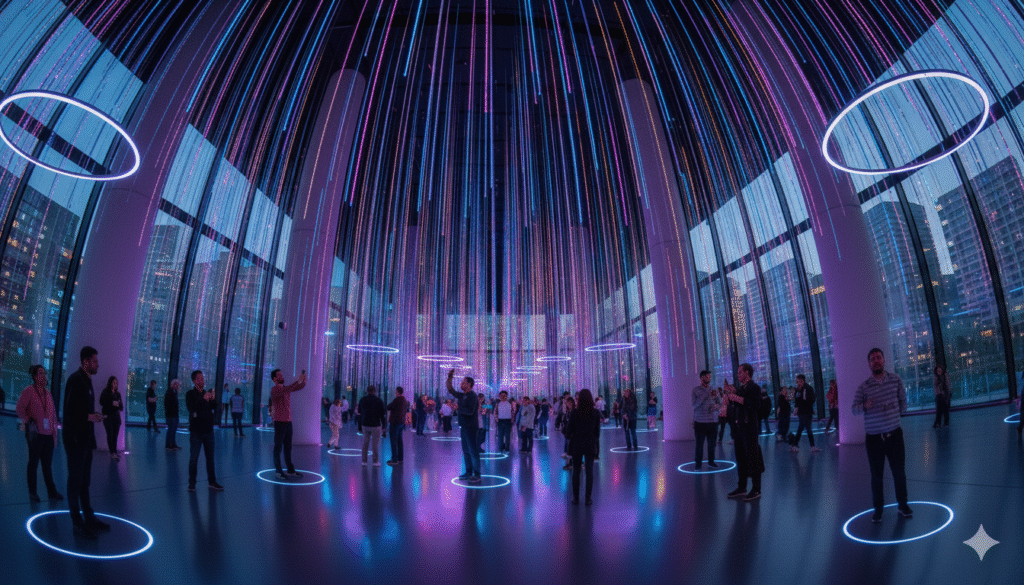
The Magic of Installation Art
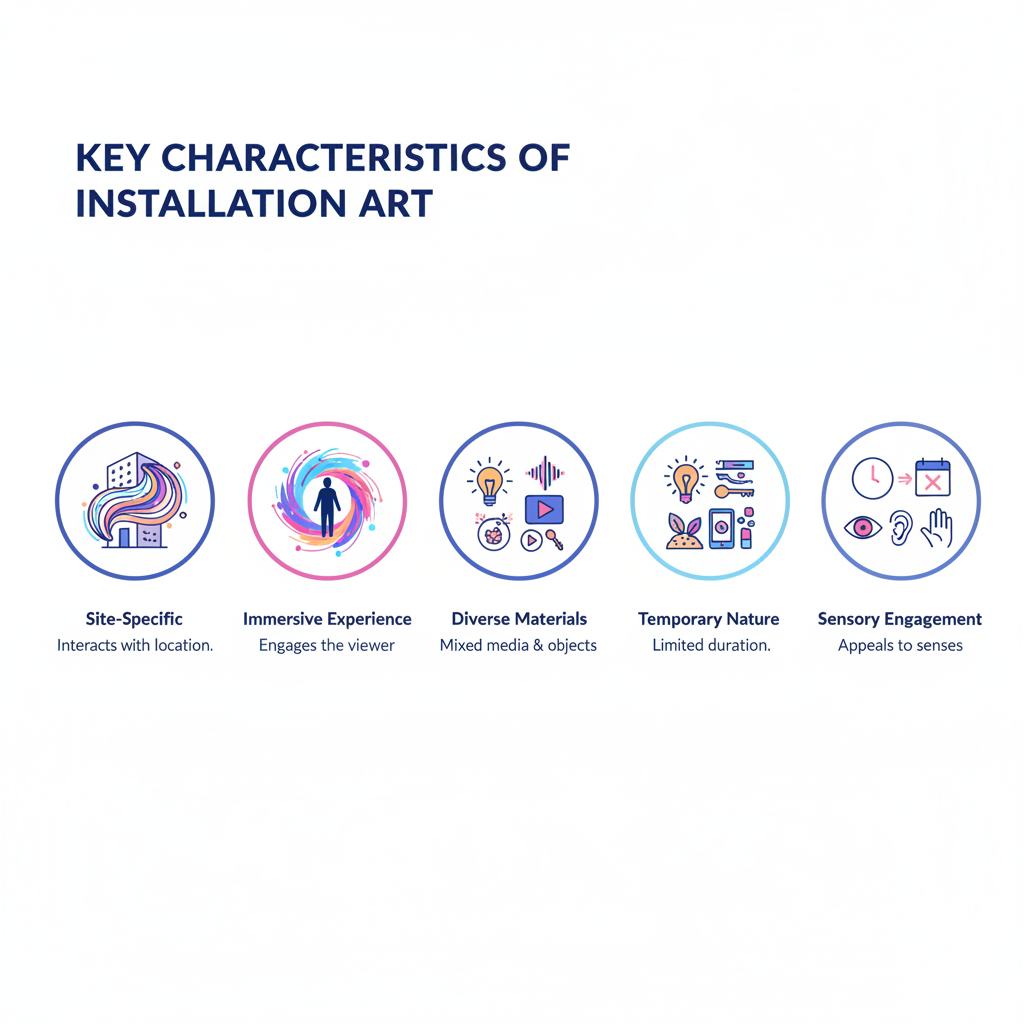
When we think about art, we often picture famous painters and paintings like the Mona Lisa or Starry Night. But installation art is a different beast entirely. It is defined by its ability to immerse the viewer. It’s not just about what you see; it’s about what you hear, feel, and sometimes even smell.
This genre is heavily influenced by conceptual art roots, where the idea behind the work is just as important—if not more so—than the finished product. Artists want you to question reality, feel a sudden emotion, or become part of the story. Whether it’s a room filled with mirrors or a giant hall filled with sunflower seeds, the goal is to shift your perspective.
Why “Site-Specific” Matters
One of the coolest things about this art form is that it is often site-specific. This means the artwork is created for one specific location. If you moved it to a different room or building, it wouldn’t make sense or would feel completely different. It interacts with the architecture, the history, and the vibe of the place it lives in.
Key Characteristics of Installation Art
To help you spot an installation the next time you visit a gallery like the Tate Modern or the Museum of Modern Art (MOMA), here is a cheat sheet of its main features.
| Characteristic | Description |
|---|---|
| Site-Specific | Often created for a particular location, interacting with its architecture, history, or natural surroundings. |
| Immersive Experience | Engages the viewer physically and emotionally, making them an active participant or a part of the artwork. |
| Diverse Materials | Artists use a vast array of materials, from everyday objects to light, sound, video, and even nature. |
| Temporary Nature | Many installations are designed to exist for a limited time before being dismantled, making each visit unique. |
| Sensory Engagement | Appeals to multiple senses—sight, sound, touch, smell, and sometimes even taste—to create a full mood. |
Understanding these characteristics helps us appreciate how artists create mood with color and space, turning an empty room into a journey.
A Brief History of Installation Art Timeline
The journey of installation art is fascinating. While it feels very modern, its roots go back further than you might think.
- Early 20th Century: Pioneers like Marcel Duchamp started challenging what art could be. He used everyday objects (readymades) to show that art is about the artist’s choice.
- 1960s & 70s: This is when installation art really took off. As part of the broader evolution of art movements, artists began rejecting the idea that art had to be a sellable object. They wanted to create experiences.
- Contemporary Era: Today, technology has changed the game. Digital projections, sensors, and virtual reality allow for mind-bending immersive exhibitions that react to your movements.
Famous Installation Art Pieces & Artists
You don’t have to be an art historian to recognize some of these incredible works.
Yayoi Kusama: The Queen of Polka Dots
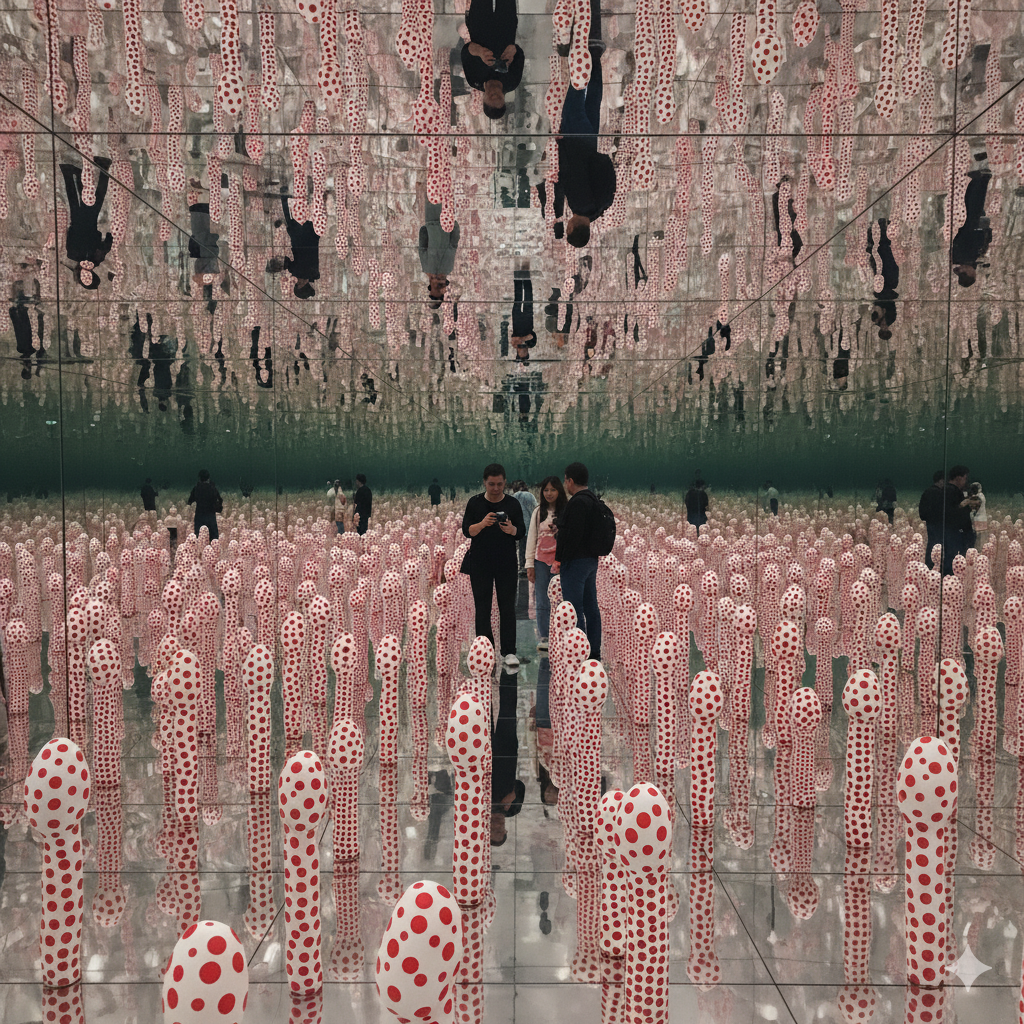
Japanese artist Yayoi Kusama is a superstar of the installation world. Her Infinity Mirror Rooms are legendary. By using mirrors and lights, she creates the illusion of endless space. Stepping inside one feels like floating in space among millions of stars. It connects to the psychology of why different people like different art styles—her work appeals to our universal sense of wonder.
Olafur Eliasson: The Weather Project
In 2003, Olafur Eliasson installed a giant “sun” in the Tate Modern in London. It was made of hundreds of mono-frequency lamps and a huge mirror on the ceiling. People would lie on the floor for hours, just bathing in the orange glow. It showed how styles of artwork can bring people together in a shared moment of peace.
Installation Art vs Sculpture: What’s the Difference?
A common question is: “Isn’t this just big sculpture?” Not quite!
- Sculpture: Usually an object you walk around. It has a distinct shape and sits in a room. You look at it.
- Installation Art: It is the room. You walk into it. It surrounds you.
Think of it like this: A sculpture is like looking at a boat in a showroom. Installation art is like being on the boat in the middle of the ocean. While traditional painting techniques focus on a 2D canvas, and sculpture focuses on a 3D object, installation art focuses on the space between the objects and you.
Creating Your Own: Installation Art for Beginners
You don’t need a museum to try this! How to make installation art at home is a fun way to get creative.
- Light: Use lamps, fairy lights, or colored bulbs to change the mood of a corner in your room.
- Repetition: Take a simple object (like paper cranes or sticky notes) and cover a whole wall with them. This technique is often used in abstract painting techniques but works great in 3D space too.
- Sound: Add a soundtrack that matches the vibe of your visual elements.
“Art is not what you see, but what you make others see.”
Edgar Degas
Stepping Out: The Lasting Impact of Installation Art
As we’ve explored, installation art is a dynamic and exciting art form that challenges traditional boundaries. It invites us to experience art in entirely new ways. It’s not just about looking; it’s about becoming a part of the art itself.
From transforming everyday spaces into fantastical realms to sparking conversations about the greatest painter ever or the nature of reality, installation art continues to evolve. Its power lies in its ability to engage our senses, provoke our thoughts, and connect us with the artist’s vision on a deeply personal level.
So, the next time you have a chance, seek out an installation art piece. Step inside, look around, and let yourself be swept away. You might just find a new favorite way to enjoy art, and perhaps even discover a new perspective on the world around you.
Learn More About Installation Art
Check out this video to see some incredible examples in action:
Frequently Asked Questions (FAQ)
What is the main difference between installation art and sculpture? While both involve three-dimensional objects, installation art goes further by transforming an entire space or environment, making the viewer part of the artwork. Sculpture is typically a standalone object you walk around.
Is installation art always temporary? Many installations are temporary, designed for a specific exhibition period. However, some permanent installations exist, especially in public spaces. The temporary nature often adds to its special, fleeting appeal.
Do I need special art knowledge to appreciate it? Not at all! Installation art is designed to be experienced viscerally. Just step in and let your senses guide you. Knowing the history, like the top painters by art period, can add layers of meaning, but it’s not required to enjoy the feeling of the work.
Can installation art be created outdoors? Absolutely! This is often called “Land Art” or “Environmental Art.” Artists use nature itself—rocks, trees, water—as their medium to create massive works under the sky.
Citations:
- Tate. ‘Installation Art – Art Term.’ Tate.org.uk.
- The Museum of Modern Art (MoMA). ‘What is Installation Art?‘ MoMA Learning.
- Art Institute of Chicago. Artic.edu.

